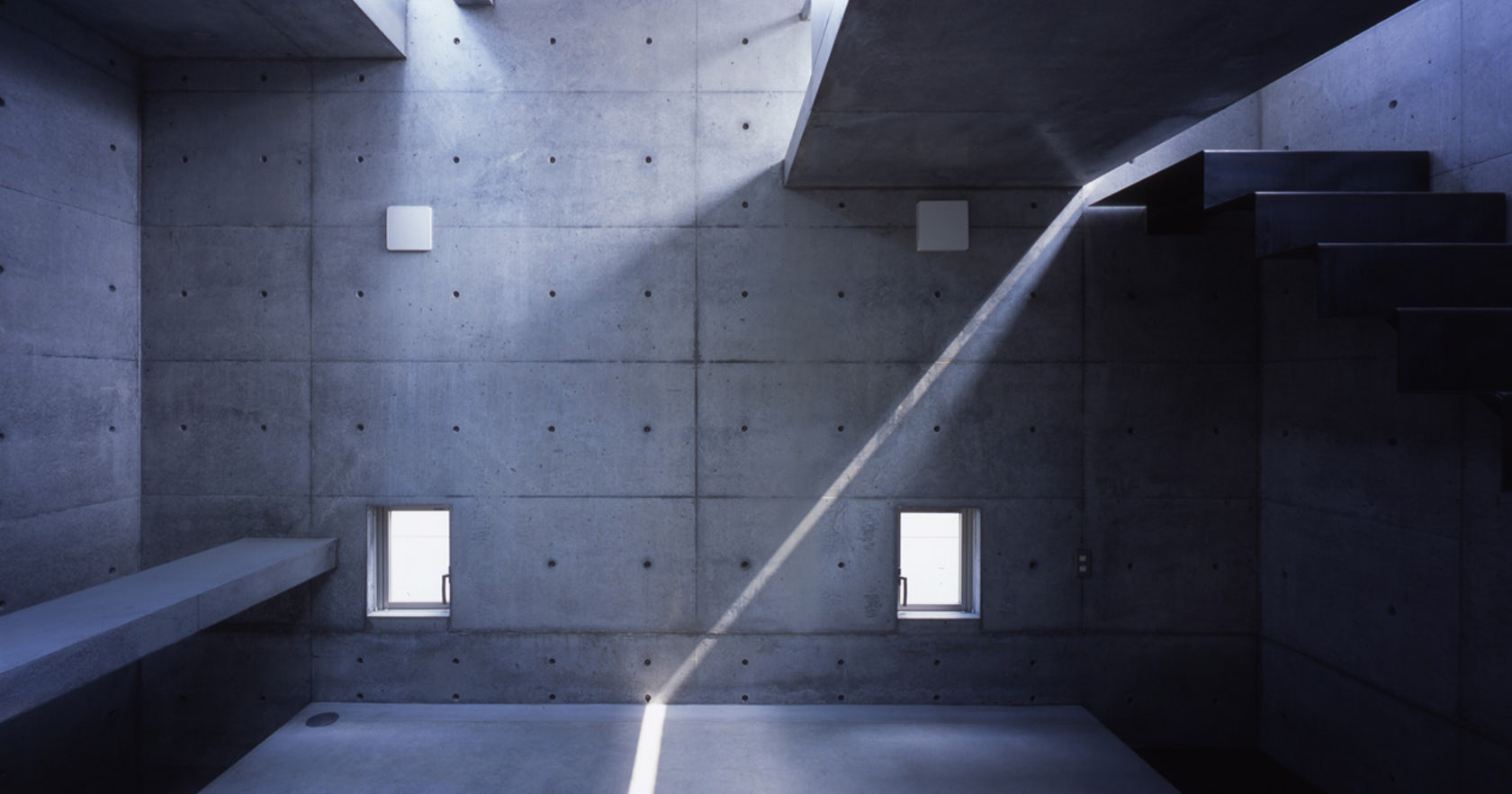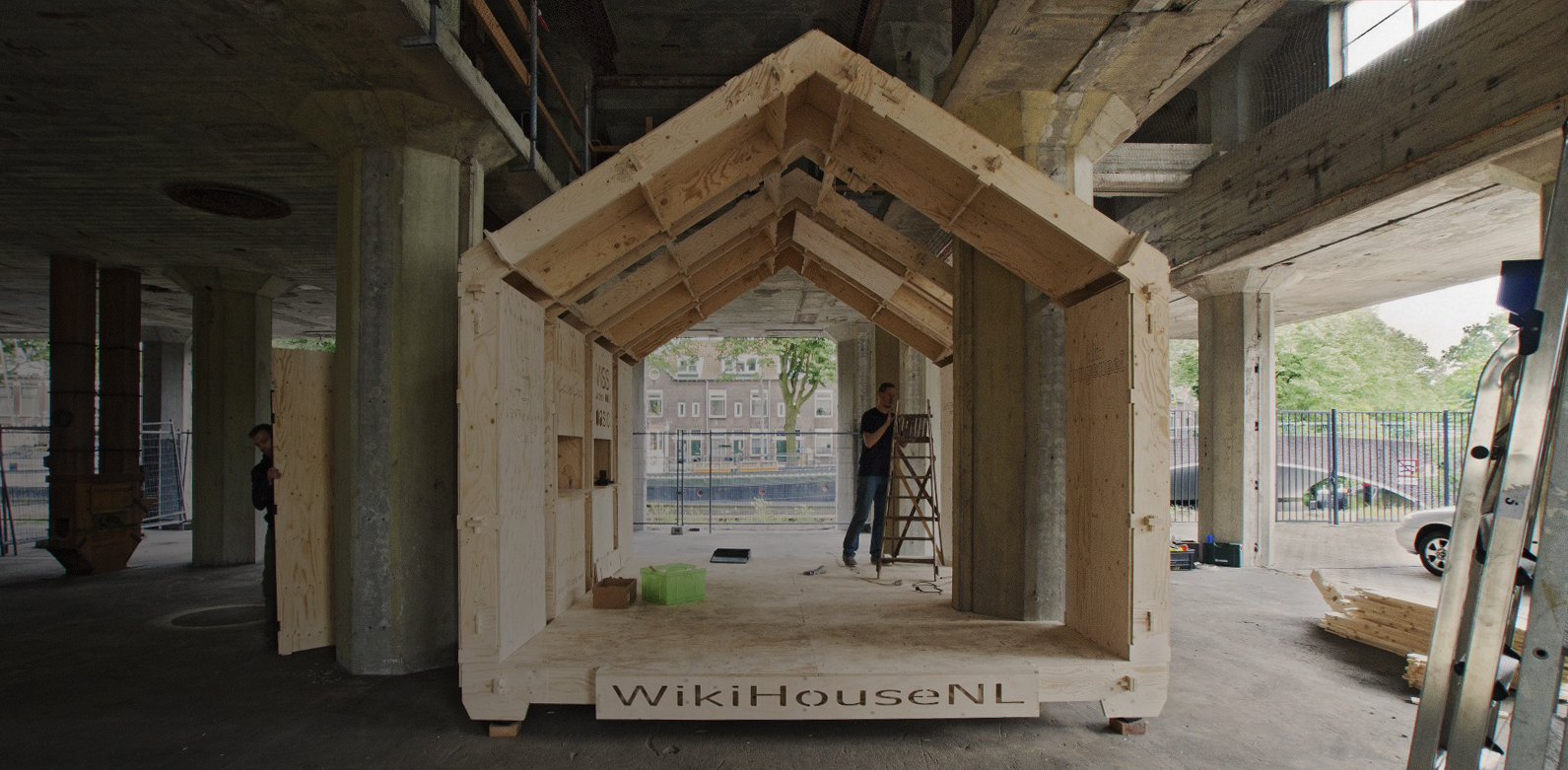Architects: Want to have your project featured? Showcase your work through Architizer and sign up for our inspirational newsletters.
If you needed any further proof that architects are magicians, here it is: Polish firm REFORM Architekt made the entire ground floor of a private home outside Warsaw disappear!
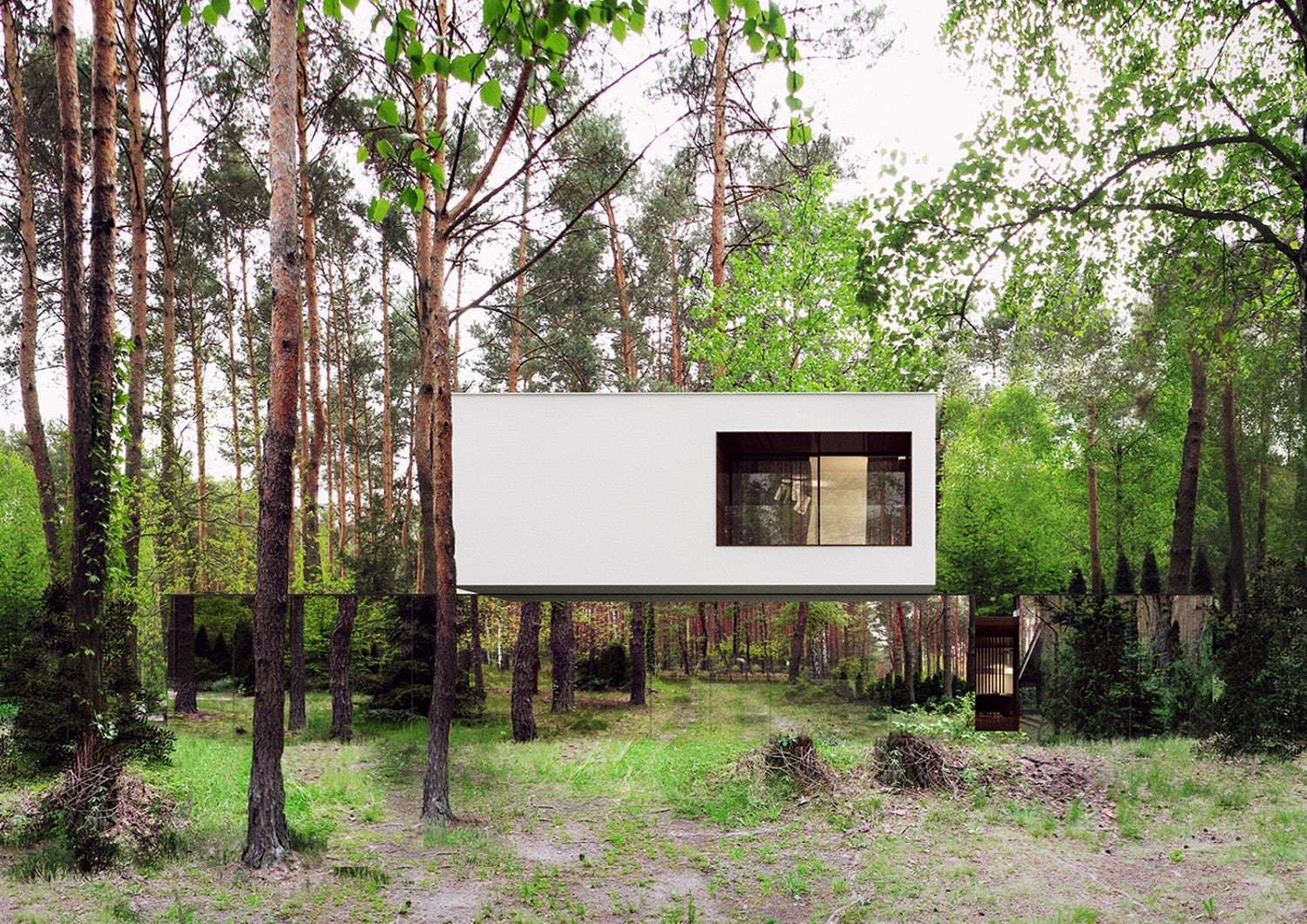
© reform
Alright, we’ll come clean. It’s an optical illusion, but a very clever one at that: A reflective skin of mirrored panels renders the lower façade of Izabelin House almost invisible when viewed from certain angles, giving the impression that the upper floor of the dwelling is levitating in the midst of a remote woodland.
The ground floor of the home is designed to read as an extension of the forest floor, reducing the visual impact of the dwelling and lending an ethereal air to the building’s upper story. The minimalist white box is punctuated with large panels of glazing and a covered balcony for residents to enjoy the luscious surroundings, and timber cladding further connects the building with its context.
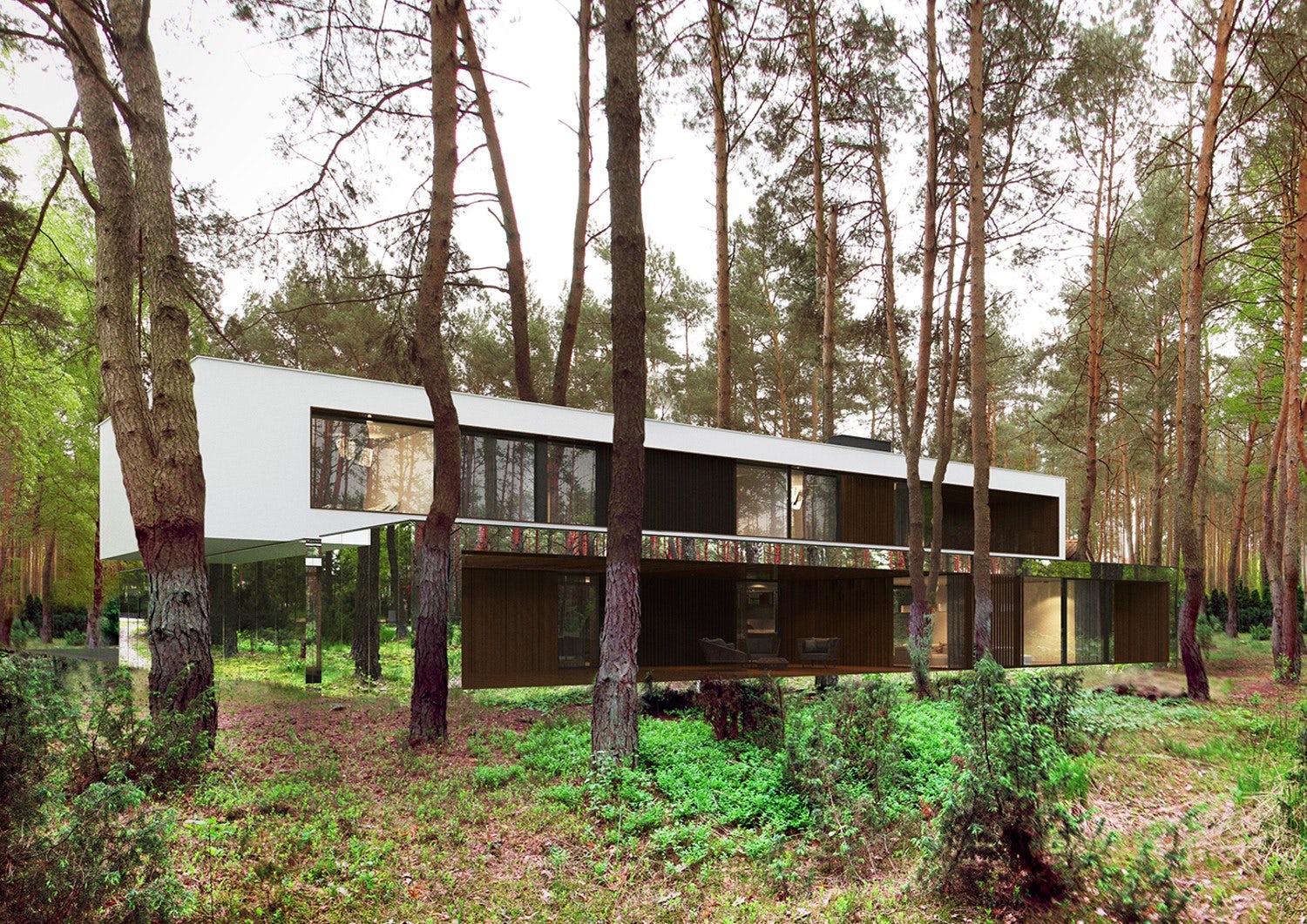
© reform
The Izabelin House will go down as a stand-out example of mirrored architecture, but REFORM are by no means the first to employ such an intriguing façade treatment. Here are six more examples to reflect on…
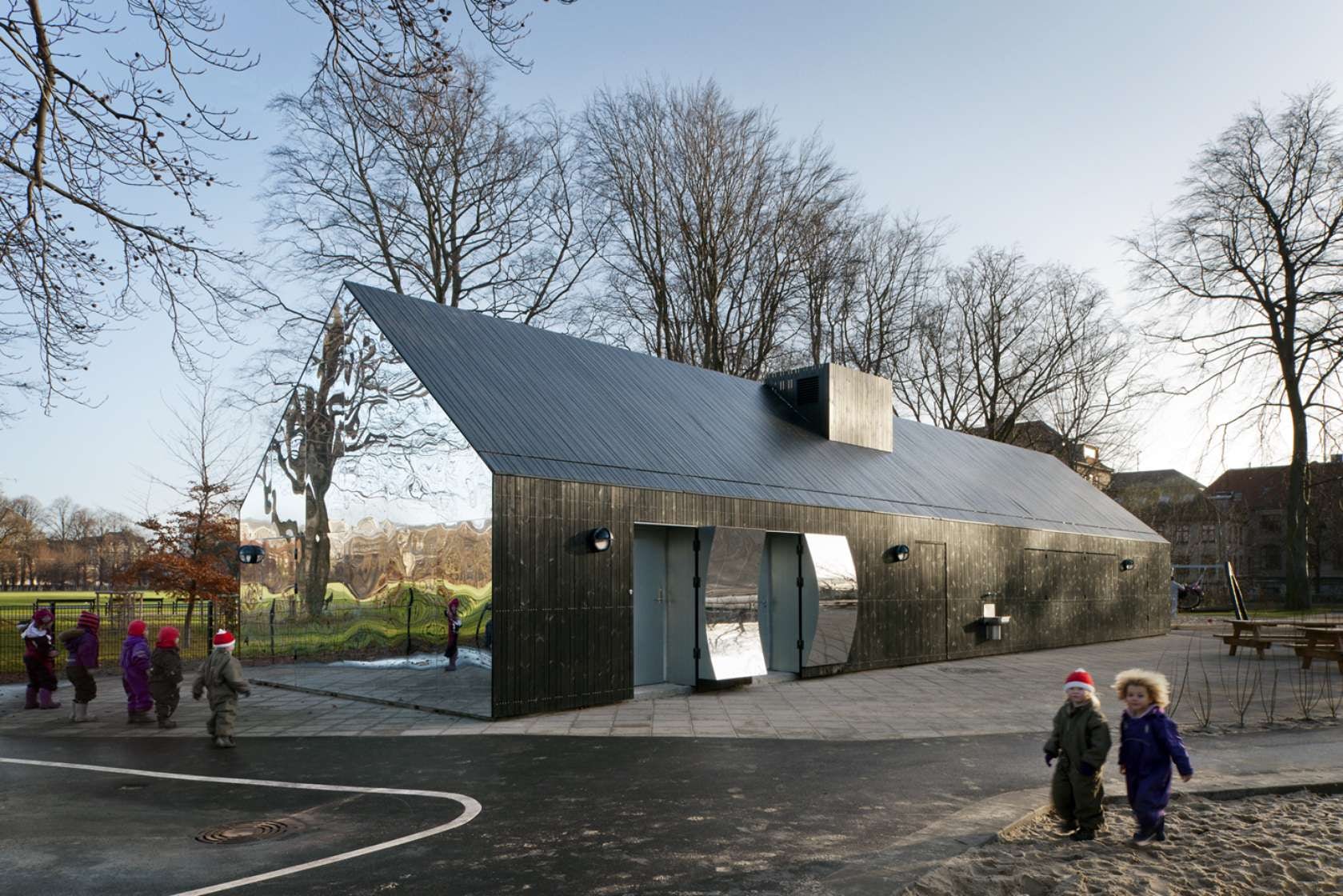

Mirrored House by MLRP, Copenhagen, Denmark
MLRP were tasked with converting a run-down park pavilion into a more useable space for children as part of the Interactive Playground Project in Copenhagen, Denmark. The firm aimed to improve the aesthetics of the mixed-use building whilst injecting elements of interactive play into the elevations.
Children can engage with the changing shapes of their own reflections and those of the surrounding environment, transforming an uninspiring structure into a miniature landmark for the local area. Check out more images and information on this project here.
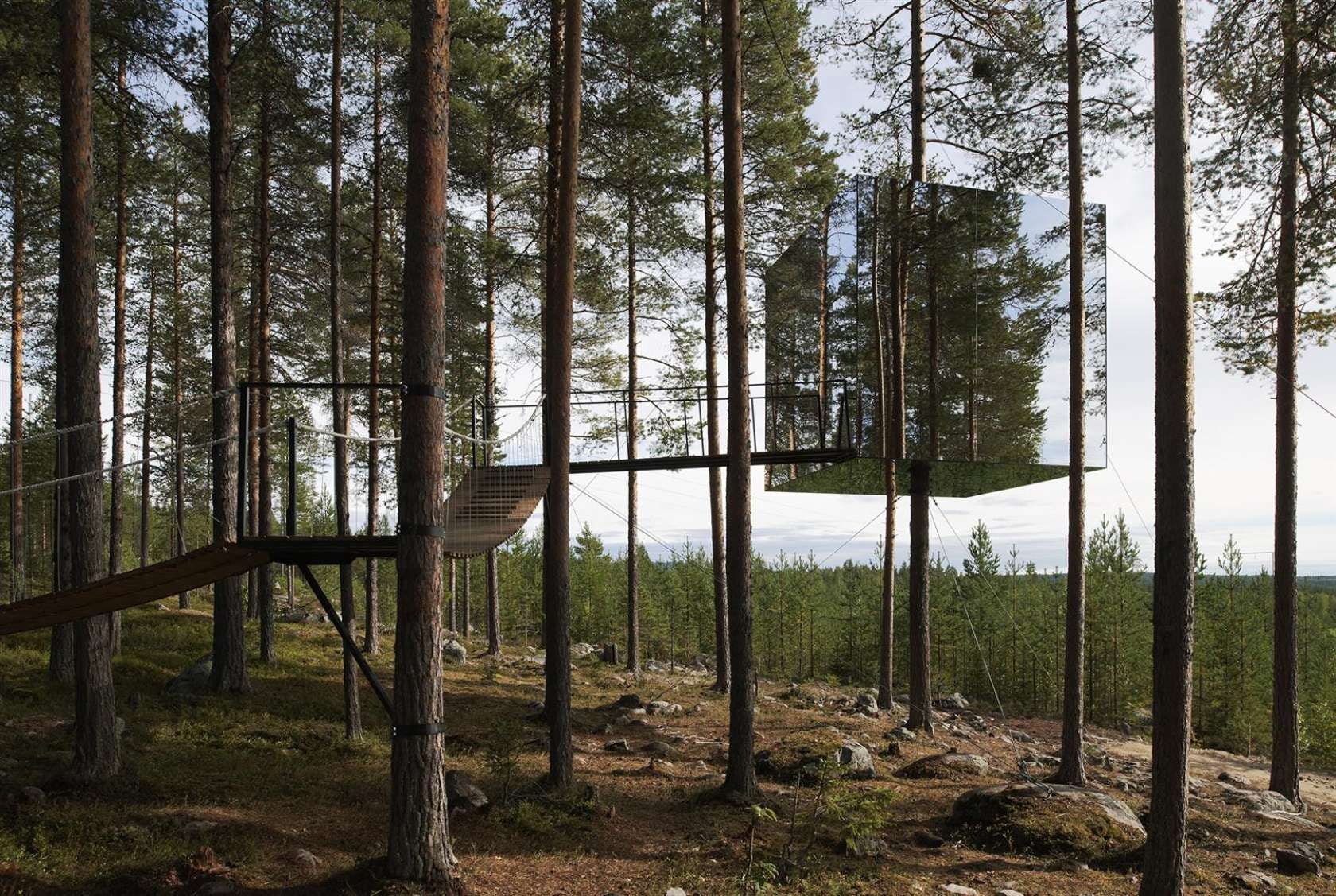
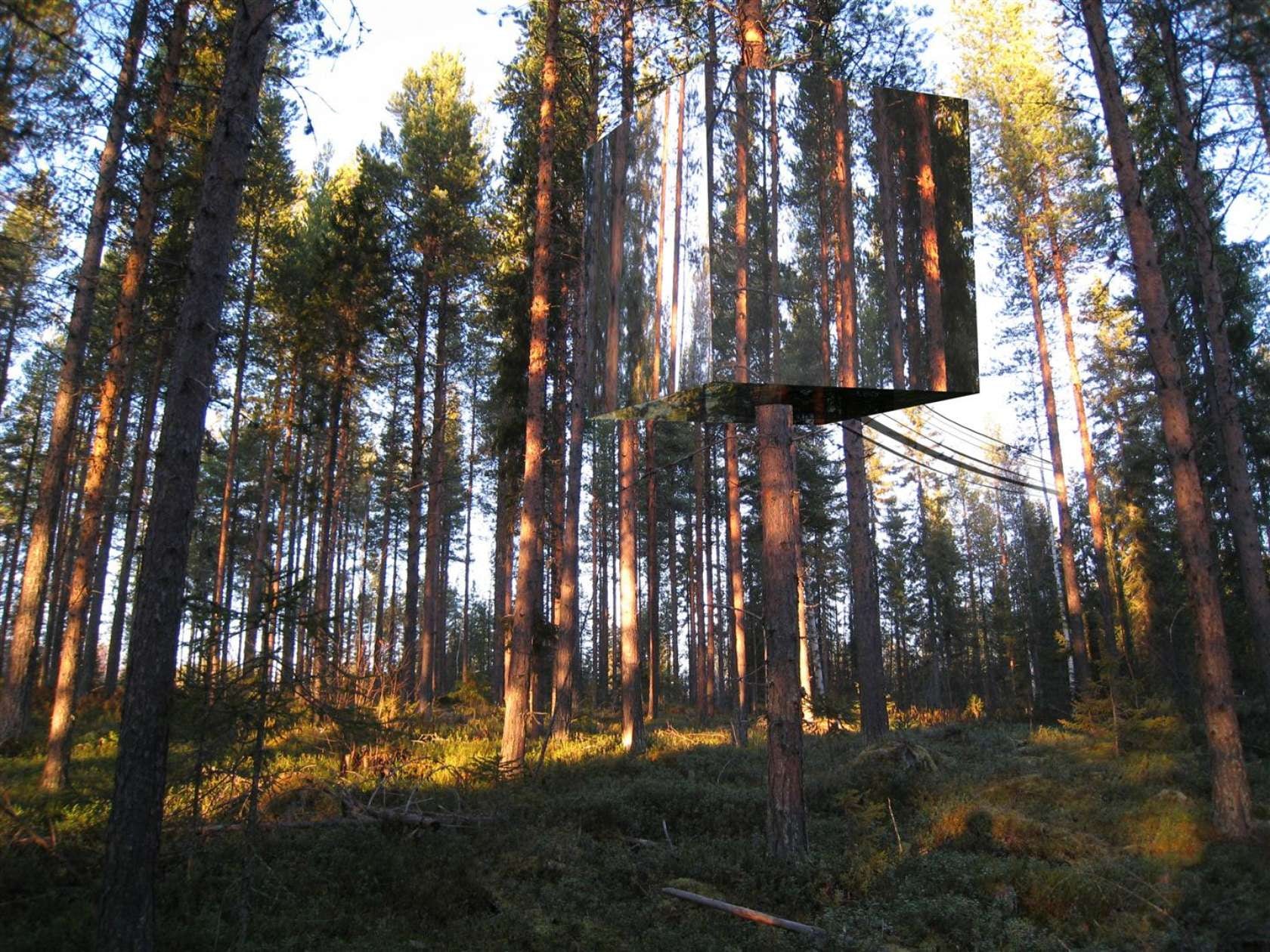
Treehotel by Tham & Videgård Arkitekter, Harads, Sweden
Located in Harads, about 50 kilometers outside of the city of Lulea in northern Sweden, Treehotel is composed of five individually designed “tree rooms,” each of which was created in collaboration with leading Scandinavian architects.
Rooms include “The UFO,” resembling a flyer-saucer caught in the trees and “The Bird’s Nest,” a veritable explosion of twigs, but the most memorable is surely “The Mirrorcube,” which reflects the surrounding landscape in its elevations so perfectly that it appears virtually invisible… the perfect retreat for those who feel the need to disappear completely. More here.

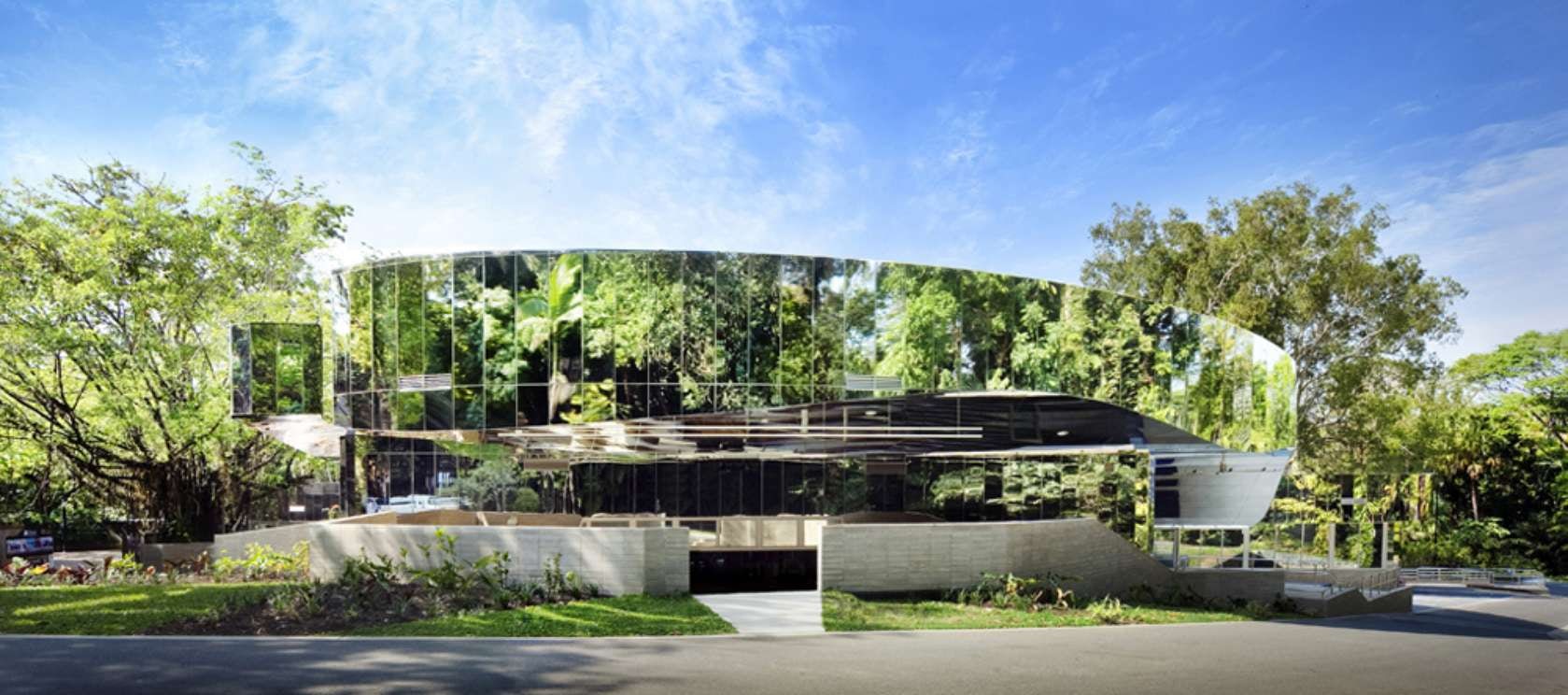
Cairns Botanic Gardens Visitor’s Centre by Charles Wright Architects, Cairns, Australia
I could describe how effective this sweeping mirrored surface is in melding the building with the surrounding rainforest, but frankly, the firm’s own explanation is far more entertaining: Charles Wright Architects “proposed a design which literally reflects the gardens as camouflage for the building, with a visual effect similar to the suit as worn by the alien hunter in the original 1987 Predator film.”
The building appears to form a curious architectural oxymoron: Its organic, wavy form seeks to grab the attention of visitors, whilst simultaneously aiming to blend in with the background like a huge, shape-shifting chameleon. The Visitor’s Centre was awarded Building of the Year by the Australian Institute Of Architects in 2012; see more details here.

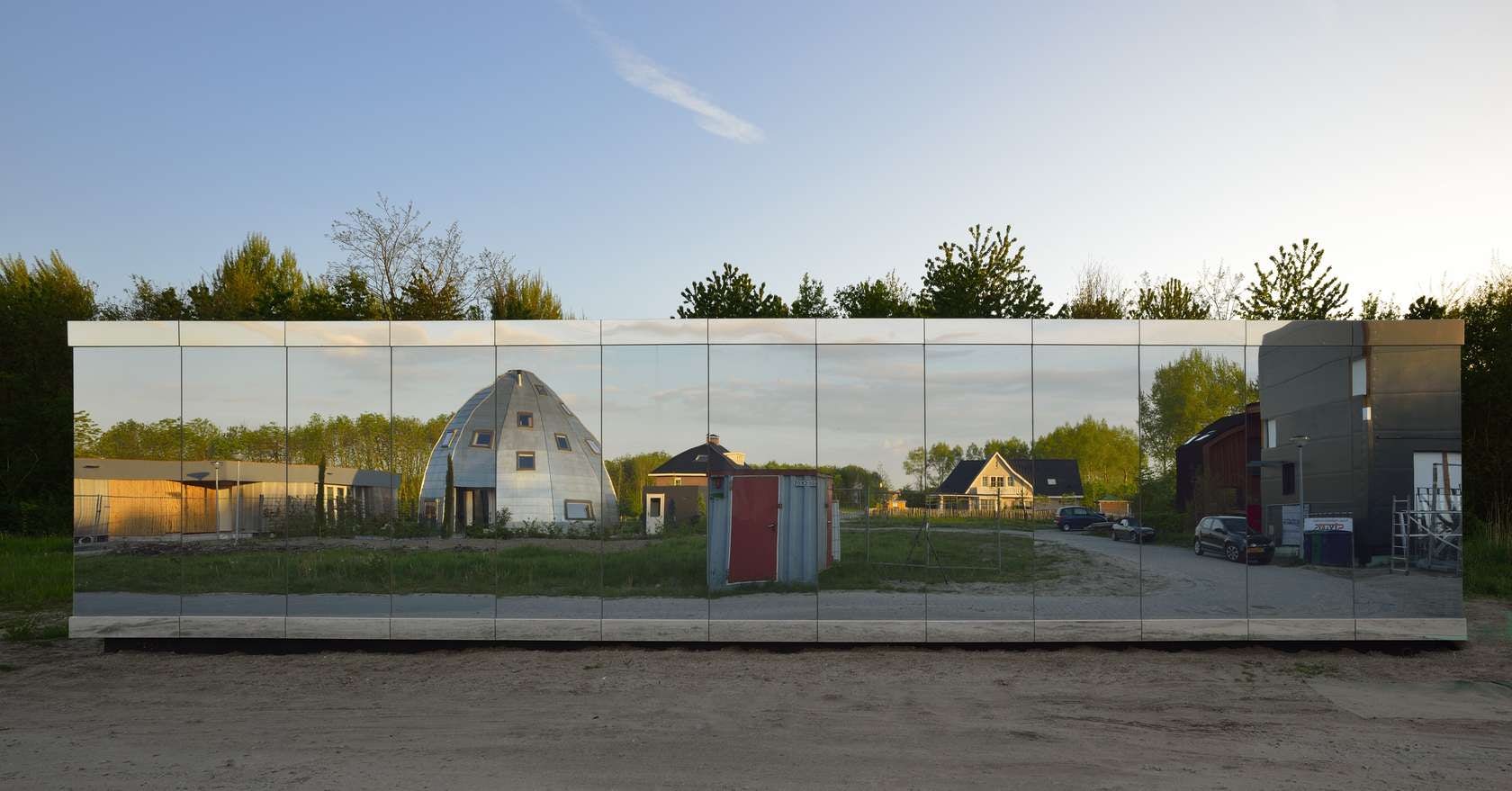
Mirrored House by Johan Selbing Architecture, Almere Stad, The Netherlands
A private commission in Almere Stad in the Netherlands, the façade of this mirrored house was specified to act as camouflage, but also as an obstruction of the view to the internal living spaces, like the windows of a luxury limousine.
Within the building, walls have been constructed from birch multiplex panels, lending the interiors a warm appearance in contrast to the cool, sleek exterior. Check out more views of this exhibition of mirrored modernism over here.

© Ross Campbell. Photographer.
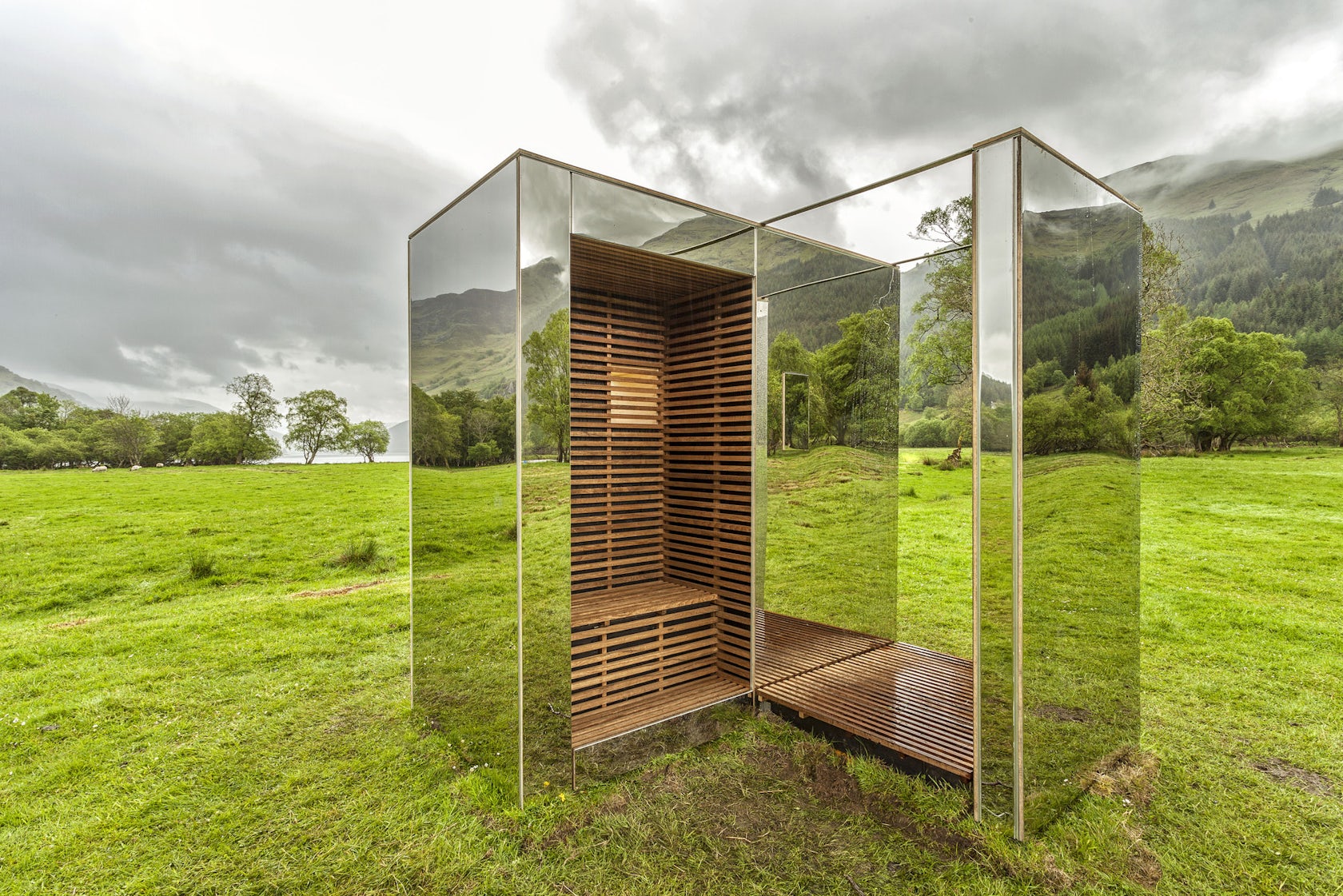
The Lookout by Angus Ritchie and Daniel Tyler, Trossachs National Park, Scotland
Students Angus Ritchie and Daniel Tyler conjured this mystical, meditative space using just $7,000 and a material palette of African hardwood, mirrored stainless steel and birch ply. It sits within the dramatic landscape of Trossachs National Park in Scotland, providing a minimalist hideout in which walkers can rest and contemplate the beauty of the surrounding vistas.
The mirrored cube appears as a grounded version of Tham & Videgård Arkitekter’s Treehotel, echoing the reflective qualities of nearby Loch Lomond. When photographed from the correct angle, the building takes on a surreal qualities akin to the work of photographer Laura Williams. Learn more about his project here.
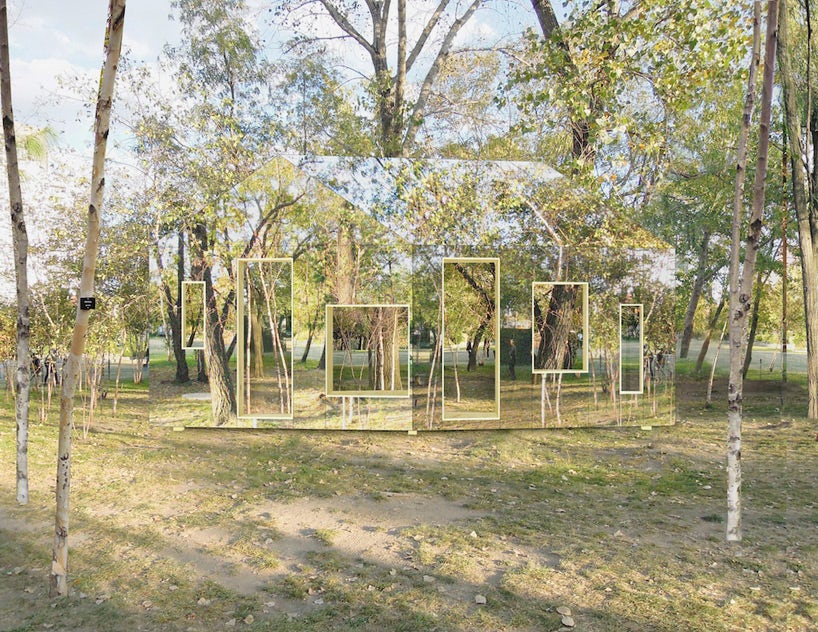

Invisible Barn by stpmj
Possibly the greatest architectural illusion of all: stpmj created the invisible barn for the Architectural League’s Folly Competition, coated the surface with super-reflective mylar that makes the structure disappear almost as effectively as James Bond’s invisible car from Die Another Day.
Of course, as with all illusions, all is not quite as it appears: The folly is only three feet wide, its supposed depth exaggerated with a trick of perspective. However, users can still interact with the installation, sitting within contrasting timber-clad apertures to contemplate the barn’s curious, animated relationship with the surrounding park. More here.
Fin
Architects: Want to have your project featured? Showcase your work through Architizer and sign up for our inspirational newsletters.






